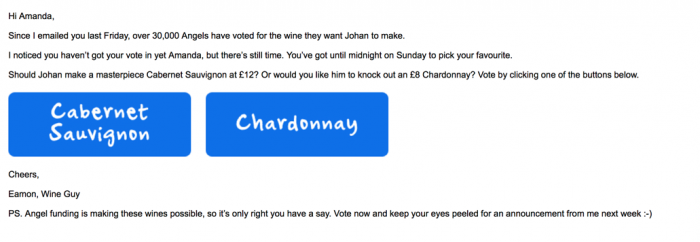
“Everything started as nothing”
Ben Weissenstein
Often, I discover a new company or experience that truly stands out. They naturally lead me to compare the new experience with ‘older’, long-standing organisations that I have been more regularly dealing with.
New brands are often free from the shackles of legacy systems, organisational silos, historical brand association and quite frankly, excuses. These businesses tend to have leaderships who are passionate about the customer. In fact, they have often come about in the first place because their founders have taken an outside-in approach and seen a customer problem or pain point for what it is, and they aim to fix what’s not working for customers.
What is common to most stand out new brands is that they don’t sell you a product or a service, rather they deliver an experience. An experience that feels more personal, more considered, more authentic and more relevant. These attributes make brands stand out and their experiences, generally more positive and memorable. By the way, they’re not all perfect but they are doing many things that customers value, very well.
One of the approaches that we often use with clients is to get them to envisage their customer experience from another organisation’s perspective. For example, putting themselves in the shoes of an Uber, an Amazon, a Netflix, when looking at their own challenges and planned responses.
Here are three of my own personal examples of great ‘new’ brands and why they are delivering superior experiences to the incumbents: Naked (launched in 2008), Astrid & Miyu (launched in 2011) and Bought by Many (launched in 2012). They’re all different. One is an online wine retailer with a difference, another is a physical/online jewellery retailer and another a consumer insurance provider.

What do I like about them as a customer?
For those who haven’t come across them before, Naked Wines is a wine business funded by its customers. They fund independent winemakers in return for exclusive access to wines at wholesale prices. There’s a sense of involvement, empowerment and a different take on value for its customers.
Naked make you feel that you are involved and that you are almost part of the brand or company. They do it in an engaging and personable way.
They have an on-going dialogue with you and feel truthful, open and fair.

I recently got this communication (from Rowan the founder) to make sure that I had seen the news last week about their break from Majestic. I felt that he was trying to ensure that I was in the know and knew what the changes really meant to me rather than leaving it down to what’s in the press.


What do I like about them as a customer?
Astrid & Miyu is a London based contemporary boutique jewelry brand, which has quickly built a cult status among fashion editors, celebrities and influencers. Their pieces have been worn by Georgia May Jagger, Pippa Middleton, Lydia Millen, Amelia Liana, amongst others but they are designed to be accessible to the masses.
The business was formed in 2011 by Connie Nam and Jenny Orlova who attended London Business School together with backgrounds in Investment banking.
“We were trying to solve a problem a lot of people have when trying to buy jewelry. You find something affordable but it looks cheap or you find something you love and it’s too expensive. We wanted to fill in a gap by providing good quality costume jewellery that is affordable. Our price point is £15 – £400 so it’s very accessible.”

They wanted to appeal to a variety of customers with different styles. They visualise the customer for that week. Every product is shown on a real person, so that customers can easily envisage what it would look like on them. The collection and product names are humorous and tongue-in-cheek to add personality to the jewelry.
The business recognises the importance of engaging directly with its customers whether this is through their flagship store, face-to-face or via their continuous marketing messages and on-going customer dialogue.
The brand creates sophisticated communication campaigns, both newsletter and automated, that are individually personalised based on data-driven insights. Customers at different stages of the customer journey receive email campaigns that are specific to their interactions with the jeweler.

It has recently introduced a buy now, pay later option by joining up with Klarna and making it even easier for customers to buy from them.

What do I like about them as a customer?
Bought By Many is a non-charging, members-only service that helps people find insurance for the things in life that customers care about. Their key message is ‘creating better insurance for everyone’. They launched in 2012 when they started creating groups for people with specific insurance needs and negotiating deals and discounts with established insurers. They launched their unique pet insurance product in 2017.
They now have over half a million members and more than 300 insurance ‘groups’. These groups are relevant communities where customers can engage with like-minded individuals with topics or areas of interest related to insurance. There’s also a wealth of information, articles, help and expert advice.


Bought By Many negotiate discounts, cashback, and freebies with big-name insurers that aren’t available anywhere else in order to provide their customers (their community) with the best value available. We got money given back to us last year as we didn’t make a claim. That was a nice surprise that we hadn’t expected and goes against personal insurance experiences provided by others.
Their ‘snap’ claims system is the easiest claim process that I’ve ever encountered. They do everything for you and they follow through. All you do is upload a photo and the claim is processed and paid, very quickly.
I love this message that I got the other day which sounds like they have by interests at heart and I’m getting something of value (for nothing).
What you can learn from startups
These are just three examples that I’ve personally experienced in the UK. Organisations that weren’t around a dozen years ago. Some of the ‘older’ brands with whom I have interacted recently could learn from them. Here, I’m thinking BT, Vodafone, BA, Bupa, Direct Line…. as experience has shown me, they make their ‘experience’ hard work, frustrating and transactional.
I’m not suggesting that brands should copy others, but there are elements here that can be taken, learnt from and applied. Other organisations could do worse than reviewing their own experience ‘principles’ with these examples in mind.
Specifically, how well you:
- Communicate proactively
- Are open and transparent
- Show that you understand and value individual customer needs
- Engage in ‘dialogues’
- Are reliable and follow through
- Take ownership for the customer throughout the customer journey
- Enhance and/or save the customer time (rather than waste it)
- Focus on the sorts of details that others neglect but are important to customers
- Embrace emerging technologies
A customer experience is considered and should happen by design – not by accident or through history. You’ve all heard the quote: “your unhappiest customers are your greatest source of learning”, but the same could be said of those who come into the market, set and change customers’ expectations and deliver something new, different and improved.



